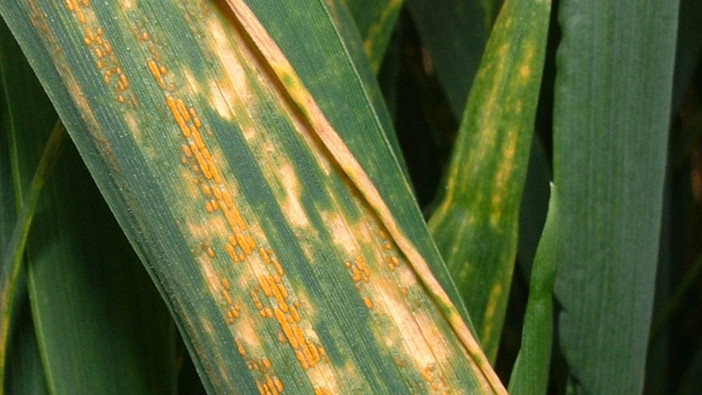Hutchinsons is urging growers to ensure that emerging wheat ears are fully protected through to harvest as unsettled weather continues.
The T3 fungicide application is where some farmers may try to make savings, however, David Howard, head of integrated crop management says that this could be risky.
The application is the main protection against fusarium infection, which could be a higher risk this year as rainfall splashes spores further up the canopy. T3 could also be more important when it comes to topping up foliar disease control, including septoria and rusts.
“We are in a high disease year, Septoria tritici, brown and yellow rust, already have a foothold in some crops and continued protection will be required to achieve potential.
“With lower than average solar radiation levels throughout the spring, it is imperative that crops retain green leaf area for as long as possible to maximise light interception well into the longer daylight hours and fill to their full potential.”
He added that T3s should be applied when ear emergence is complete and flowering is underway, however, the variable crop growth this year and unsettled weather will mean that extra attention is needed to hit that optimum timing.
“Delaying the T3 application, even if the T2 has only recently been applied, will result in poor ear disease control, particularly once flowering is coming to an end (GS 69). Accurate timing on-farm is a huge practical challenge given that flowering occurs once ears are out and before florets are visible, and in practice it is better to be a little early than a little late.”
Product type should be based on several factors, including varietal susceptibility, presence of disease, chemistry used at T2, and weather forecast from ear emergence to flowering.
For fusarium species, he says metconazole, prothioconazole or tebuconazole all offer good control, leading to reductions in DON mycotoxins. He notes that AHDB and ADAS trials suggest better results from prothioconazole + tebuconazole mixtures and formulations compared to straights of either active.
“Adding phosphites (e.g. Advance 66 or Phorce) at ear emergence has also been found to reduce DON production.”
Metconazole, or tebuconazole-based products are also strong on yellow and brown rusts, he says.
Prothioconazole is the main choice for managing Microdochium nivale, which although does not produce mycotoxins, can still have a significant yield impact. Ideally prothioconazole should be used with fluoxastrobin or tebuconazole, which would add some Septoria control where growers have already reached the maximum number of SDHIs allowed in the programme.
“If Septoria pressure is high and crops have not received two SDHI’s, then ear sprays could include an SDHI, such as bixafen/ Fluopyram+ prothioconazole/tebuconazole, fluxapyroxad + metconazole, or benzovindiflupyr + prothioconazole, where rust pressure is expected. Similarly, if Fenpicoxamid has not already been used in the program then Fenpicoxamid + prothioconazole would make a very strong Septoria option.”
Strobilurins, such as fluoxastrobin, pyraclostrobin or azoxystrobin, could be considered for added control of rusts, Septoria nodorum, and sooty moulds, he notes. They may also deliver a yield benefit through improved green leaf area retention and better stress resilience, however strobilurins must be applied with a fungicide with a different mode of action, and as with SDHIs, only two strobilurins are allowed in any crop fungicide programme, he advises.
For more information go to www.hlhltd.co.uk


